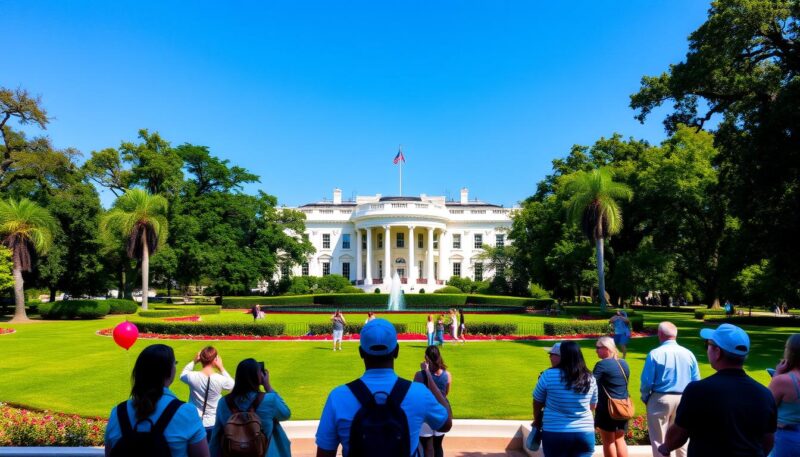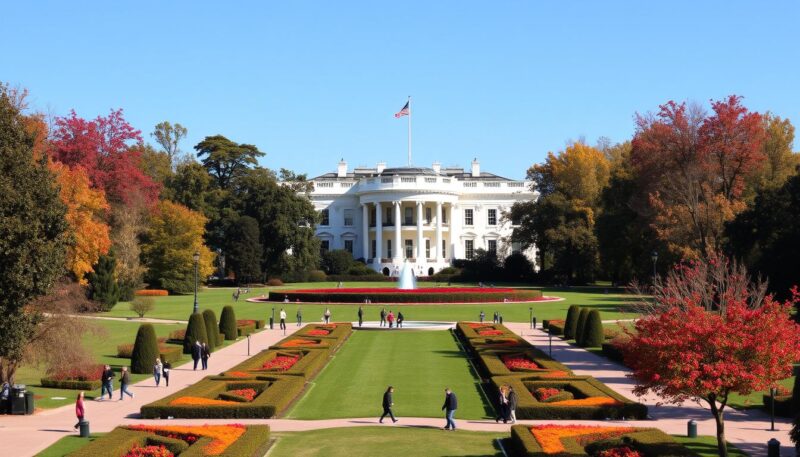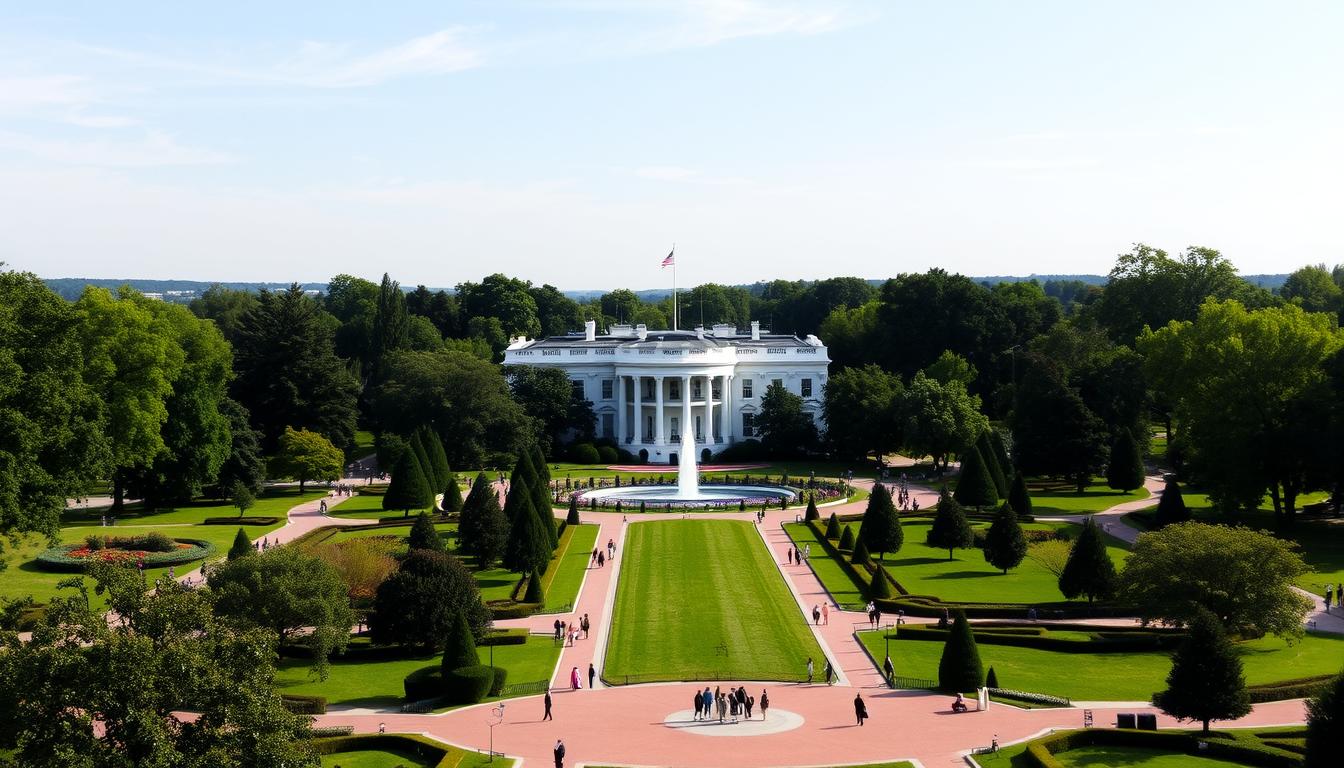Embarking on a journey to the White House offers you a unique glimpse into the heart of American governance and history. Serving as the official residence and workplace of every U.S. president since John Adams, the White House is not just an architectural marvel but a repository of rich stories and artifacts that illuminate the nation’s journey. If you’re a resident or visitor looking to discover this iconic landmark, understanding how to visit the White House is paramount. This guide provides essential insights into planning your visit, including how to request a tour and what you can expect upon arrival.
Planning Your Visit to the White House
Preparing for your visit to the White House involves careful planning to ensure a smooth experience. Understanding the process for requesting a tour is essential, particularly if you want to make the most of your time at this iconic site.
How to Request a Tour
To tour the White House, you need to submit a request through your Member of Congress. It’s advisable to make this request as early as possible, up to 90 days in advance, with a minimum requirement of 21 days. This means, if you want to maximize your chances, you should be proactive in the planning process. For international visitors, reaching out to your home country’s embassy in Washington D.C. is the appropriate route for obtaining access. Tours are free of charge, but they fill up quickly, so early requests are crucial.
Tour Schedule and Availability
White House tours typically take place from Tuesday through Saturday, between 9:30 AM and 12:30 PM. This window allows visitors to explore various significant areas of the house. Be aware that schedules can change based on different factors, including weather or official events.
The following table outlines important details relevant to White House visitor information:
| Details | Information |
|---|---|
| Tour Request Timing | Up to 90 days in advance, minimum of 21 days |
| Tour Days | Tuesday to Saturday |
| Tour Hours | 9:30 AM – 12:30 PM |
| Prohibited Items | Bags, food, beverages, strollers, video cameras, and weapons |
| Important Notes | Free tours, request through Congress |
By following these White House tour tips, you can effectively navigate the process and ensure your visit is both enjoyable and educational.
What to Expect on a White House Tour
Embarking on guided tours of the White House offers a unique glimpse into American history and culture. You can anticipate a structured experience that includes prominent public rooms and significant sites. Understanding the details and adhering to White House rules ensures a smooth visit.
Tour Details and Duration
White House tours typically last about 45 minutes. During this time, you will explore the East Wing, which includes stunning rooms such as the Blue Room, Red Room, Green Room, and State Dining Room. Public tours are available from 8 a.m. to 12:30 p.m., Tuesday through Saturday. Ensure you remain punctual as all guests aged 18 and over need valid identification for entry. Tours do not include access to the West Wing, the Oval Office, or interactions with the President.
Security and Check-in Procedures
Security is a top priority during your visit. Upon your arrival, you must gather at designated locations, like Sherman Park, before the tour. Expect thorough security checks, which include restrictions on prohibited items. Food, drinks, large bags, and certain electronic devices cannot be brought into the White House. Visitors should bring only permitted items such as compact cameras for still photography and cellphones for photo capture, while keeping conversations to a minimum. Remember that restrooms are not available within the White House; the closest facilities are at the White House Visitor Center.

Visiting the White House
Planning a D.C. White House visit can be an exciting yet daunting task. Understanding the best times to visit as well as the available accessibility options can significantly enhance your experience.
The Best Times to Visit
Spring and fall stand out as the ideal seasons for a visit to the White House, offering pleasant weather. Consider scheduling your trip around public holidays and special events, which might impact the availability of tours. It’s beneficial to plan ahead, as tours are allocated on a first-come, first-served basis, with requests accepted up to three months in advance and no less than 21 days before your visit.
Accessibility and Transportation Options
The White House provides numerous accessibility options for visitors needing assistance. Wheelchairs can be borrowed upon arrival. It’s important for those with hearing or visual impairments to contact their Member of Congress for tailored assistance during their tour.
Public transportation is highly recommended for your D.C. White House visit. The closest Metro stations include Federal Triangle, Metro Center, and McPherson Square. No parking is available near the White House, which emphasizes the significance of alternative transport methods, ensuring a smooth arrival.

Conclusion
Visiting the White House is not just a leisurely tour; it’s an immersive journey into the heart of American history and culture. The iconic building, with its 132 rooms and rich history dating back to its inception in 1792, offers you a unique opportunity to understand the nation’s legacy. From exploring the intricacies of the White House architecture, including its 412 doors and 147 windows, to appreciating the significance behind the name “White House,” which was officially adopted in 1901, each detail adds depth to your experience.
To make the most out of your visit, proper planning is essential. Familiarizing yourself with the procedures and guidelines on how to visit the White House enables you to navigate the necessary security checks smoothly. The popular residence also features stunning grounds covering 18 acres, enhancing the allure of the site where every president has made monumental decisions throughout history.
By adhering to these guidelines and appreciating the historical context, your visit can become not just educational but truly memorable. The White House stands as a testament to America’s past and present, ensuring that each visitor leaves with a greater understanding of both the building and what it represents in American democracy.
